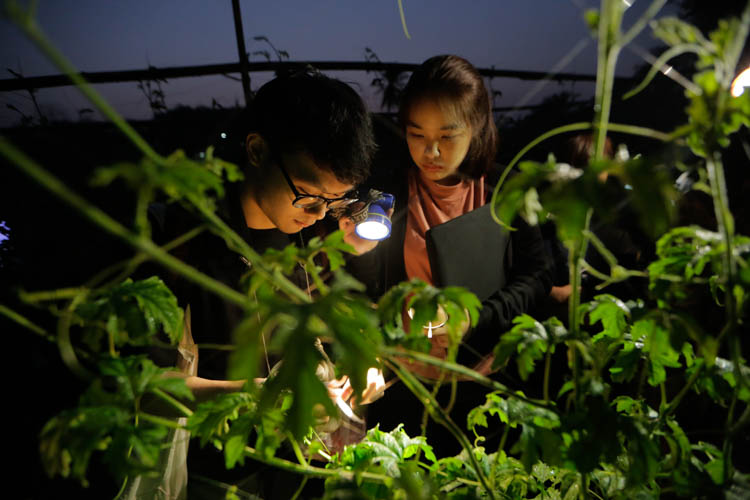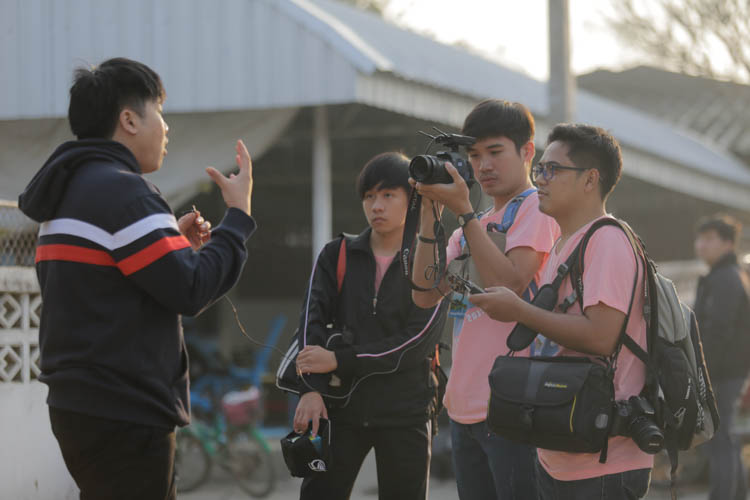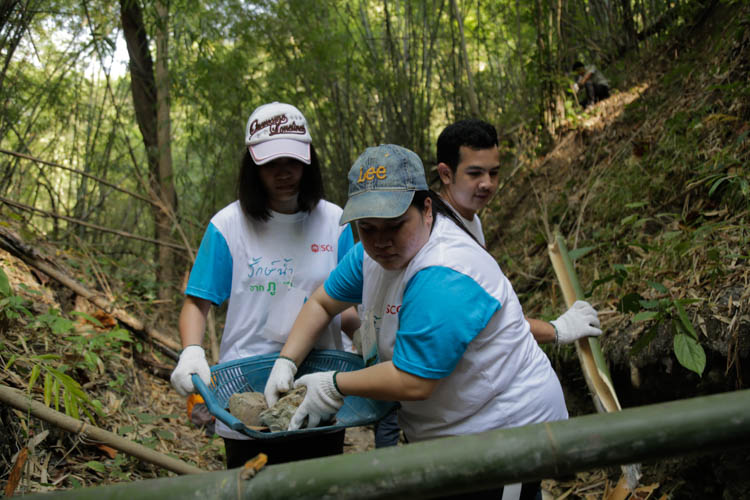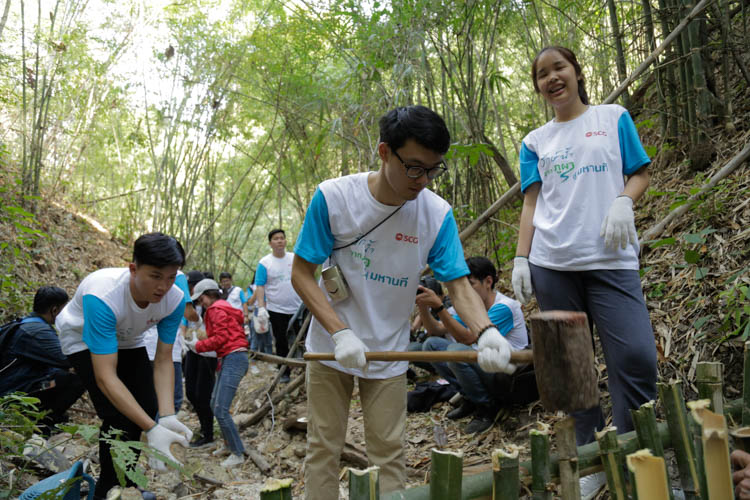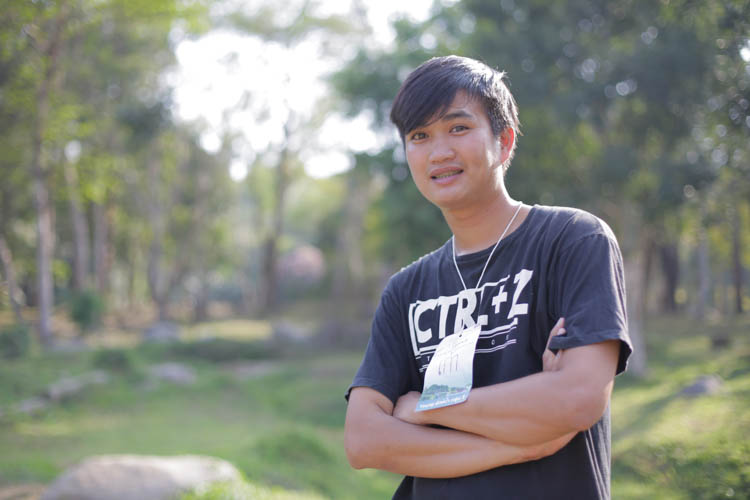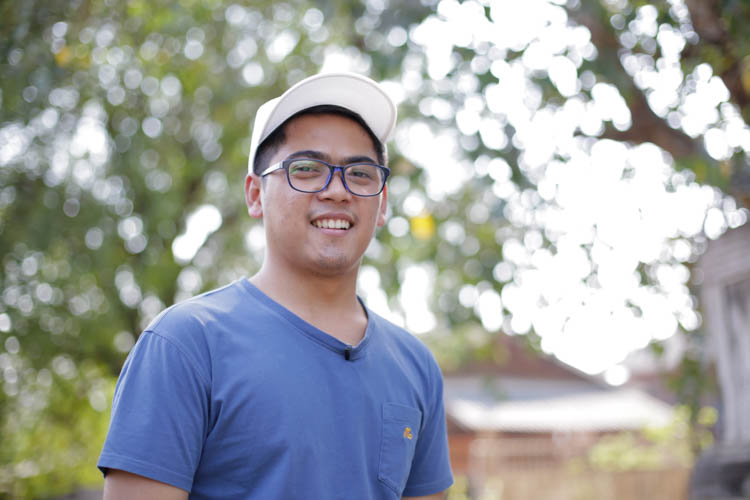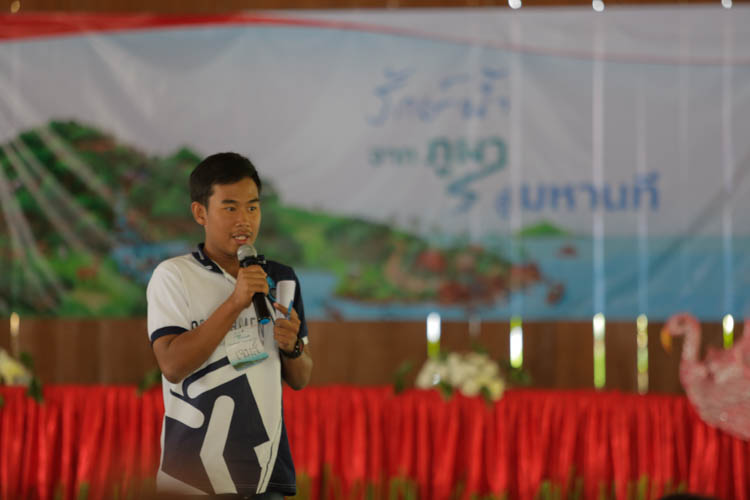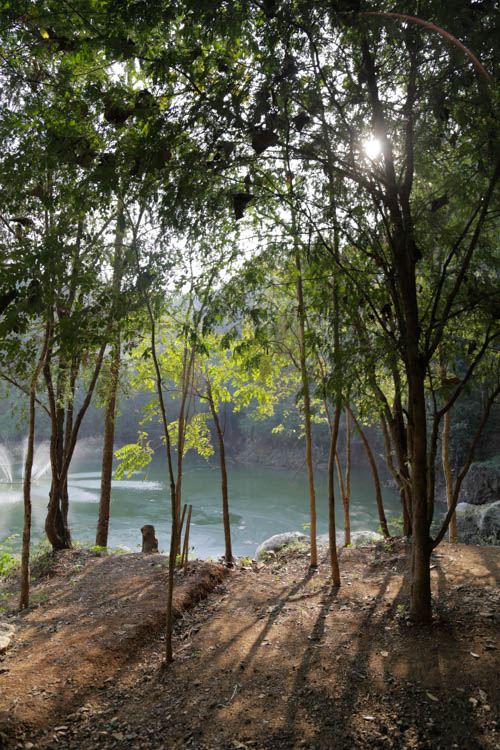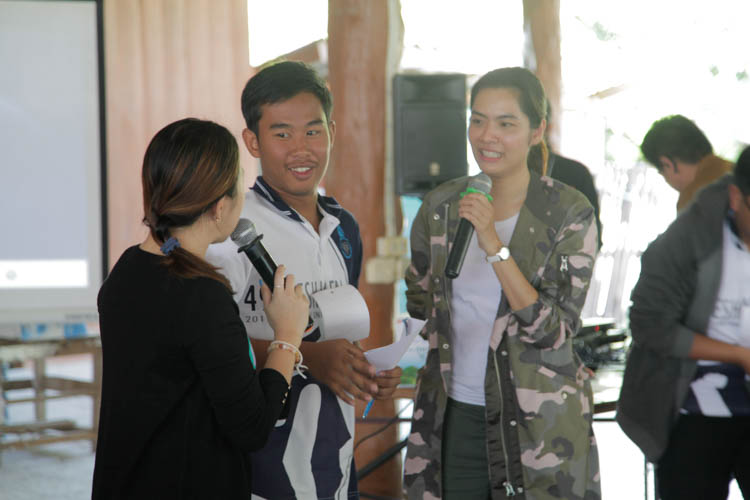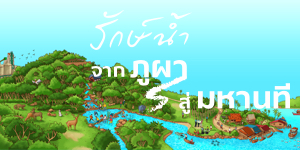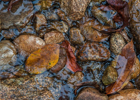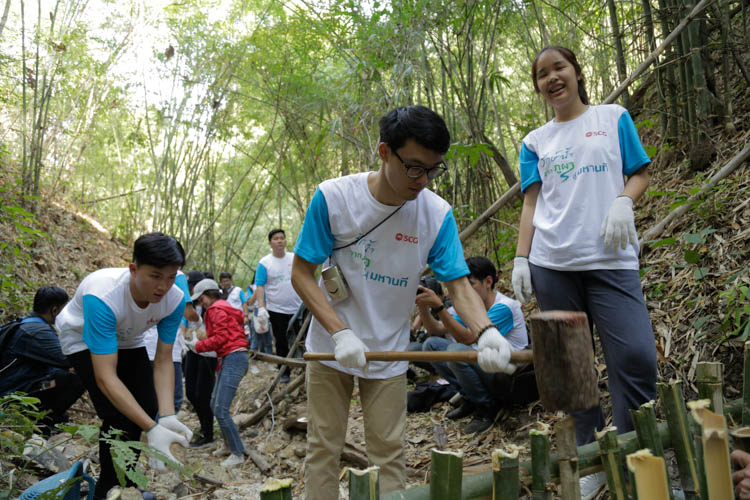
In the past, our lives were intertwined with water. We relied on rivers and streams to supply water for our daily lives; we needed water for agriculture and for transport; while the vast ocean was a source of livelihood for many. Today in the modern world, we get around on roads and city dwellers have water supply all year round until we have forgotten that water is a valuable resource that must be managed with understanding. Floods and dry spells now occur daily because we think water management is not related to our daily lives.
With the belief that that water management must be carried out sustainably from upstream to downstream, SCG’s “Raknam…From the mountains to the mighty rivers” has followed the footsteps of His Majesty King Bhumibol Adulyadej in conserving water resources for over 10 years. From building check dams in the forests that had water sources, sending the water to ponds that will hold the water in the dry season, building water retention areas or Kam Ling to enable farmers to utilize water for agriculture, to taking care and restoring ocean ecology by creating fish homes for fish and sea creatures to dwell. Moreover, SCG invited the younger generation that we call the “YOUNG RAKNAM” to join this project in learning and conserving water resources for the future.
For the first journey of this project, SCG started in upstream areas before traveling to other areas throughout the year, offering an opportunity for university students who were interested in the environment and keen to learn about water management to experiment in building check dams to preserve water for dry seasons while also learning about water management with communities in Lampang from February 8 to 11, 2018. The a day team sat down with students in the “YOUNG RAK NAM” program, from those living in upstream, midstream and downstream areas to explore how their perspectives towards water conservation had shifted.
Upstream
Jojo, a mass media major joined the project with his best friends because of his passion for travel and his interest in nature preservation. “Raknam…From the mountains to the mighty rivers project follows the lessons of His Majesty King Bhumibol Adulyadej. At first, I thought that we only had to build check dams in upstream areas and let the water flow downstream. However, there were so many details in conserving water resources, from upstream, midstream, to downstream. If we don’t preserve water in upstream areas, it will all flow to low-lying grounds, and that is why we need to dig large and small ponds to guide the path of the water. SCG educated the locals in Lampang and taught then to preserve water in the ponds in each village.”
Growing up in an upstream area, Jojo said that he saw with his own eyes that when the dry season arrives, locals lack water such as in Chiangmai University where a reservoir was built to address the issue. He was also determined to spread this knowledge to his friends at university.
“We need to spread the message to the people around us and create a momentum, then, we can organize more volunteering activities across villages in Chiangmai. I want to teach this knowledge to others in upstream areas so it can become a sustainable knowledge and not just build dams for them without the locals’ understanding of water management.”
Jojo added that as a mass media major, he wanted to spread his knowledge to others through a variety of media to create more awareness in water conservation. Talking to Jojo, we thought he really was a source of hope for the later generations.
Midstream
Sutat ‘Kaow’ Suratha, was a third-year student in the Mass Communication Technology, Rajamangala University of Technology
For those living upstream, looking after wellsprings and forests are important and they must preserve water during the rainy season or flooding season so that they can have water to use all year round. For those living midstream, Kam Ling should be utilized to preserve water as well as keep water resources clean. The main problem faced by Kaow who lived in the midstream area of Rangsit was water pollution.
“Here, we don’t need to worry whether we have enough water like in the northern region, but we are concerned about water pollution. I live on the canal and I can always smell the polluted water. In my opinion, I think the problem is caused by careless waste management: locals and restaurants on the canal would often throw food scraps into the water.”
For locals in the midstream area who are not in an agricultural community like Kaow, Kam Ling may seem unrelated to their daily lives, but what they can do is take the best care of their water resources.
“We live in the central region, a midstream area, and we have to preserve water. To fix the issue of polluted water, we must start with ourselves and stop throwing waste into the canals. We may think that it’s only a little waste, but with numerous people littering the water, the canal will eventually be polluted. I really want to let those who litter the canal know that they should refrain from throwing waste into the water as it can immensely harm the canal.” Moreover, since joining this program, Kaow had been more frugal with water use. “It’s easy to use water, but we also need to preserve it for the future.”
Downstream
Suthipong ‘James’ Ngamsa-nga, was a 2nd year student of the Faculty of Humanities and Social Sciences, Thaksin University, Songkla Campus.
He said that the experience and knowledge gained from Raknam…From the mountains to the mighty rivers project was all new to him as most of the problems he faced at home were related to floods.
“I’ve built check dams only in the southern region, where we have a lot of water all year round, so we needed to build dams to slow down the flow of water and decrease floods. However, in Lampang, the check dams were made to preserve as much water as possible because during the dry season they will have no water to use at all. The situation is very different.”
As for water preservation on the Andaman coastal area which is a downstream area, James explained that the national park system would allow tourists to visit the area for 4 to 6 months per year and close the national park to let coral reef restore itself and let fish breed. What locals in the downstream area could do is take care of water resources and refrain for destroying the environment.
Apart from knowledge, what this youth in the downstream area gained is the awareness of water management. “After joining the project, I value water more than ever. As I live in the southern region, I never thought much about water but now that I have visited Lampang I know that the people there really don’t have any water to use in the dry season. If we don’t help preserve water, maybe in the future the southern parts will have a dry season like the north. I try to use less water while taking showers or brushing my teeth. I try to use only what is necessary.”
The flow of water connects us all, from upstream, mid-stream, to downstream. SCG Raknam…From the mountains to the mighty rivers project called for everyone to work together to sustainably conserve water along its path from upstream to downstream.
Courtesy of a day magazine
